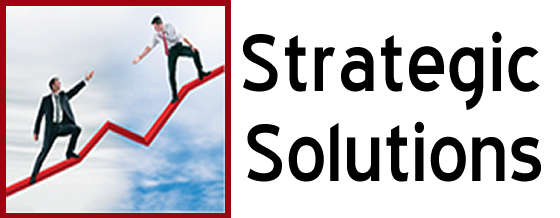Why Following the Dots Doesn’t Work and What Does
When I was a kid, back in the Dark Ages, I used to play follow the dots. Many of you may remember it. It’s a puzzle of sorts, comprised of numbered dots and as you work sequentially from dot to dot you create a picture. The picture is merely an outline. Often there would be elements, (an eye for example), not part of the outline, that would be drawn in to give you a clue as to what the finished product might be.
I think the intended motivation behind it is to encourage children to push forward, focus, and persist to completion, giving them a sense of accomplishment..
After I played it for a while, it began to bore me, so I started playing games with myself to shake things up a bit. After following a few dots, I’d look back at the lines I drew and tried to guess from there what the intended image would turn out to be, which made completing the picture not only quicker but far more interesting. I could applaud my accomplishment if I succeeded, and if I didn’t I would go back and learn where I went wrong and figure out how to fix it. That fun started waning too until I realized I also had the power to bypass the rules of the game and create my own. Instead of following the numbers I’d look at the dots and to create my own picture by connecting them any way I’d choose.
I liked that the best. It even taught me a couple of things. I learned to always use a pencil and never use a pen. It’s easier to correct mistakes when they’re not carved in stone.
I also learned that following the dots isn’t enough, and that being persistent about following a path outlined by others holds little reward virtually no satisfaction. The greatest reward and satisfaction comes from making inspired connections. Whether my results yielded form, function or a child’s hodgepodge of abstract expressionism, the fact remained that they were uniquely mine. I was proud of them.
In business, blindly following the dots of predetermined methodologies and working hard to insure you nail them to the letter doesn’t guarantee success. Our minds don’t work that way.
Broadly speaking, different portions of the brain control intellect, movement, senses, emotion, memory, etc., but they don’t function independently. It’s only through neural networks that we connect knowledge, feeling, reason, fact and experience. What we perceive and interpret using our connected minds, provides the context for our views. By extension, we can say that knowledge alone is meaningless unless we connect the dots back to our own experience and feelings.
Steve Jobs once said, “You can’t connect the dots looking forward; you can only connect them looking backwards. So you have to trust that the dots will somehow connect in your future. You have to trust in something — your gut, destiny, life, karma, whatever.”
At a commencement address several years ago, author Ann Patchett expanded on that when she eloquently said, ”Coming back is the thing that enables you to see how all the dots in your life are connected, how one decision leads you to another, how one twist of fate, good or bad, brings you to a door that later takes you to another door, which aided by several detours — long hallways and unforeseen stairwells — eventually puts you in the place you are now. Every choice lays down a trail of bread crumbs, so that when you look behind you there appears to be a very clear path that points straight to the place where you now stand. But when you look ahead there isn’t a bread crumb in sight — there are just a few shrubs, a bunch of trees, a handful of skittish woodland creatures. You glance from left to right and find no indication of which way you’re supposed to go. And so you stand there, sniffing at the wind, looking for directional clues in the growth patterns of moss, and you think, What now?”
The upshot is that anyone can follow the dots and draw the outline of a picture someone else has created. It’s safe but like everything else in life, does not come with a money back guarantee.
Looking at today by connecting the dots of past experience that got you here, doesn’t get you to tomorrow either, but benefits you nonetheless. You have the reassurance, strength and faith in yourself that past experience has given you. And if you reach a fork in the road, l scratch your head and think to yourself ‘What now?”, don’t worry about it so hard that you lose perspective. Sometimes not having all the answers, but trusting yourself is the greatest gift.
If that’s the case, my best advice comes courtesy of our old friend Anonymous who said:
“Always trust your gut. It knows what your head hasn’t figured out yet.’
